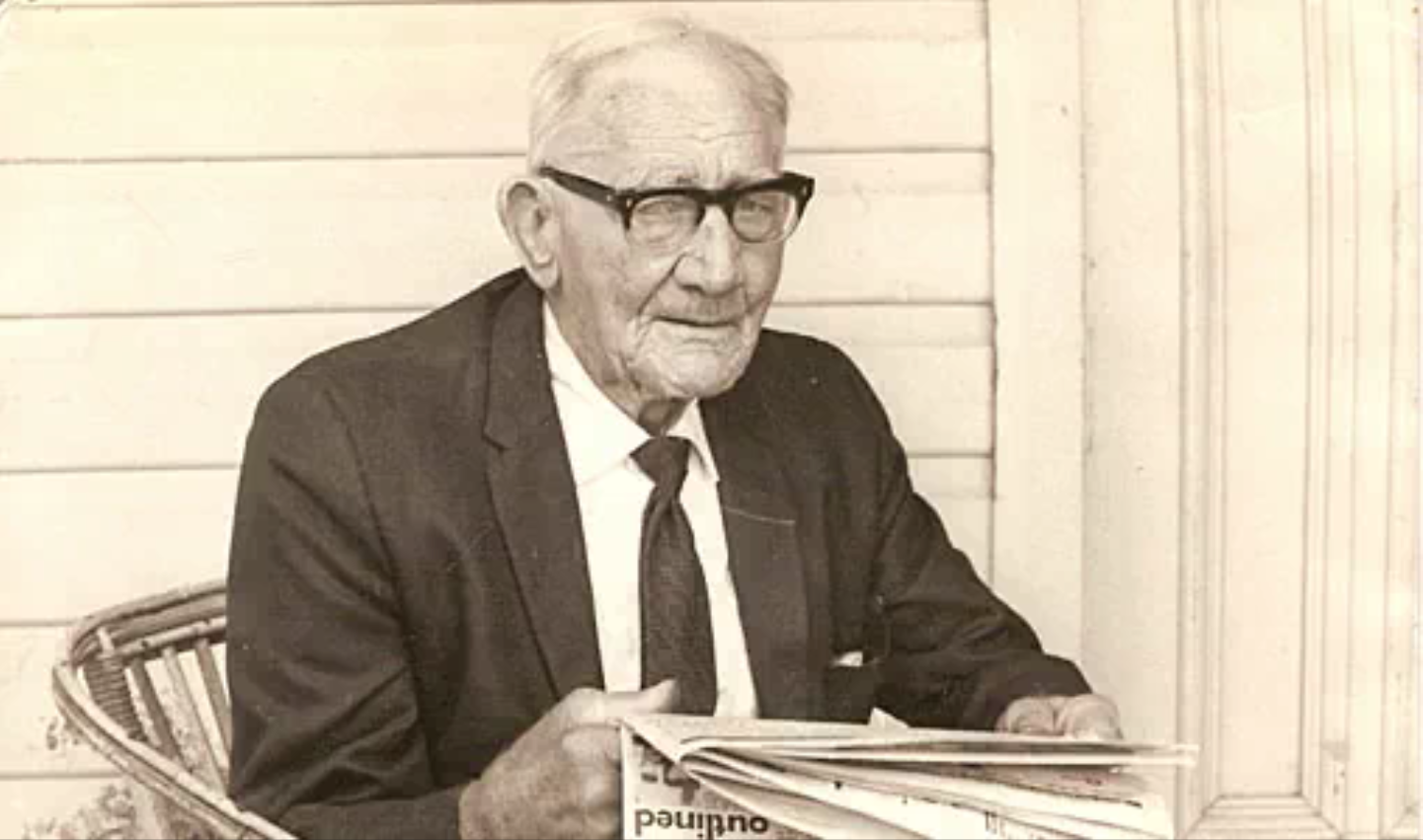Australian English
Mr Bennett
born: 1880
grew up: Gulgong NSW
listen for: intrusive "r" "kelly" "died" "old"
Intrusive "r"
In this excerpt Mr Bennett is discussing the alleged return of Dan Kelly.
One interesting characteristic . . . "old".

Mr Bennett
born: 1880
grew up: Gulgong NSW
listen for: intrusive "r" "kelly" "died" "old"
Intrusive "r"
In this excerpt Mr Bennett is discussing the alleged return of Dan Kelly.
One interesting characteristic . . . "old".
Dialect
What is dialect?
A language is made up of a number of different dialects, each having its own characteristics of vocabulary, grammar, idiom and pronunciation that are different from other varieties.
Voice Portrait
For some other interesting examples of the changing Australian English accent, visit In the past.
Accent
What is accent?
An accent is the term used to describe the kind of sound patterns that people use when they speak. Everybody has an accent. It is the result of contact with different people at different times in our lives.
Our accent is one of the ways that people gain impressions about us. It is a symbol of who we are and reflects our social and cultural history, including aspects of cultural background (for example speaking English with a French accent) and regional affiliation (speaking English with an Australian accent or an Adelaide accent). The accuracy of these impressions depends on how well the listener knows the accent.
As humans are social beings, we want to be like the people we share our lives with, particularly those of a similar age. We express our membership of social groups in a number ways, including the way we speak. Our accent is closely tied to our sense of identity.
Accents can change as circumstances and experiences change. Usually accents change most during the pre-adolescent and adolescent years but can continue to change up until the early twenties when a more stable sense of self and identity has developed. Accents can change past this point but this depends on conscious and subconscious motivation and may occur if social/cultural situations or aspirations change.
Positive and negative opinions about accent are usually based on the social connotations associated with an accent and not on the accent itself. There is nothing inherently good or bad about any accent.
Because speech is produced by co-ordinated movements of the lungs, the larynx (voice box) and the mouth, it contains certain characteristics that are specific to a person because of their physiology. Physiological aspects of size, gender, age, and health are conveyed through speech. Speech can also tell us something about a person’s emotional or attitudinal state. For instance, if someone is bored, excited or sad, signs of these emotions may be present in their speech patterns.
Australian English dialect
Australian English: a regional dialect
Australian English is a regional dialect of English. A dialect is a variety of a language that has characteristics of vocabulary, grammar, and pronunciation that are different from other varieties. Australian English can be described as a regional dialect of English because it is spoken by people in Australia, a particular geographical location. The English language is actually the sum total of all its different dialects. No one of these should be considered the “proper English” dialect. All serve the purposes of their users equally well.
Speakers
Speakers of present-day Australian English are usually those who are born in Australia, or who immigrate at an early age, generally before or during their early teens.
Subgroups
Dialect subgroups
There are three major dialect subgroups of Australian English:
- Standard Australian English
- Australian First Nations varieties of English
- Ethnocultural Australian varieties of English.
Standard Australian English (SAusE) is the dominant dialect and is used by the vast majority of speakers.
Reference:
Cox, F., & Palethorpe, S. (2007). An illustration of the IPA: Australian English. Journal of the International Phonetic Association, 37, 341-350.
